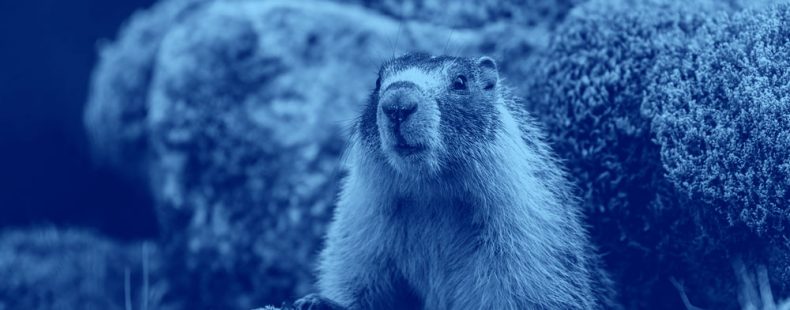Punxsutawney Phil is the official mascot of Groundhog Day, but is he really a groundhog? Or is that a gopher hole out of which he emerges to see his shadow? Is a woodchuck even a thing? Or is it just a made-up part of the tongue twister?
In this article, we’ll dig into the differences between gophers, groundhogs, and woodchucks, discuss how the terms can overlap, and explain how these animals got their names (it’s actually way more interesting than the words suggest).
⚡Quick summary
Gophers and groundhogs are both types of burrowing rodents and are both found across North America, but they’re different animals. Groundhogs are bigger and stockier and they hibernate in the winter, unlike gophers, which have special cheek pouches. The word woodchuck is simply another name for a groundhog.
gopher vs. groundhog
The term gopher is used for a very wide variety of relatively small, burrowing rodents. The name is most commonly used to refer to the pocket gopher, which is found throughout North and Central America, particularly in the prairie region. The name gopher is also sometimes applied to certain ground squirrels found in Europe (also called susliks).
A groundhog, on the other hand, is a type of marmot—a large, ground-dwelling rodent of the squirrel family. These hole-dwelling creatures are found throughout Canada and most of the eastern US.
Gophers and groundhogs have many similarities. Both are rodents (an animal group that also includes squirrels, beavers, rats, and mice, among many other animals). Gophers and groundhogs are both brown and furry and known for digging burrows, and both are herbivores.
However, they have several key differences. Groundhogs are bigger, stockier, and they hibernate in the winter. Gophers are smaller and have large, distinctive cheek pouches. As noted above, susliks, which are sometimes called gophers, are a type of ground squirrel, as are groundhogs. But pocket gophers are not.
Did you know gopher ball is a popular slang term in baseball? Learn more baseball jargon here.
groundhog vs. woodchuck
Woodchuck and groundhog are simply two different names for the same animal. Both terms have been used in English since the 1600s.
Preferences around the terms varies by region. In many places, the terms are used interchangeably, but groundhog is increasingly more common.
There is also a variety of less common names and slang terms for the groundhog, such as whistle pig, thickwood badger, and land beaver. (The beaver is also a rodent but it’s a much different animal.)
Where do the words groundhog, woodchuck, and gopher come from?
The first records of the words groundhog and woodchuck in English both come from the mid-1600s. The word groundhog may come from an English loan translation of a compound Dutch term meaning “earth pig.”
Woodchuck is thought to come from a reshaping of Algonquin words that refer to the woodchuck or similar animals (such as the marten). It may be based on the Narragansett ockqutchaun or the Cree otcheck. Through the process of what’s called folk etymology, English speakers replaced the original sounds with words that sounded vaguely similar to produce a new English word. So, woodchucks have nothing to do with chucking wood—which is why the words of the tongue twister are “if a woodchuck could chuck wood.”
The word gopher is a shortening of the earlier megopher or magopher, but the origin of those terms is uncertain.














